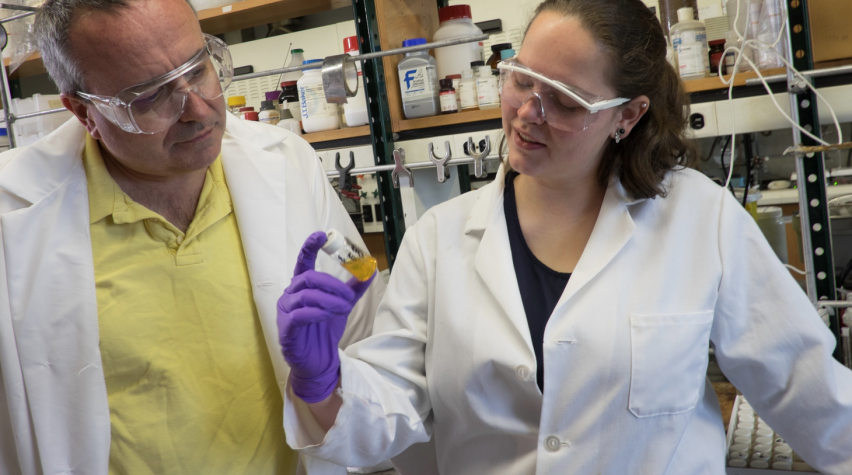
A study led by Rice University undergraduate Jessica Heimann shows that treated buckyballs have the ability to remove potentially toxic metals from water and reserve them for future use. The research was conducted in the lab of Rice chemist Andrew Barron and appeared in the Royal Society of Chemistry journal Dalton Transactions.
Carbon-60 fullerenes, or buckyballs, that have gone through the chemical process known as hydroxylation aggregate into pearl-like strings as they bind to and separate metals — some better than others — from solutions. Potential uses of the process include the environmentally friendly removal of metals from acid mining drainage fluids, a waste product of the coal industry, as well as from fluids used for hydraulic fracturing in oil and gas production.
Removing molecules selectively
Heimann and colleagues conducted a series of experiments to explore the relative binding ability of fullerenols to a range of metals.
“It’s all very well to say I can take metals out of water, but for more complex fluids, the problem is to take out the ones you actually want,” commented Barron in a Rice University press release. “Acid mining waste, for example, has large amounts of iron and aluminum and small amounts of nickel and zinc and copper, the ones you want. To be frank, iron and aluminum are not the worst metals to have in your water, because they’re in natural water, anyway. “So our goal was to see if there is a preference between different types of metal, and we found one.
Then the question was: Why?” The answer was in the ions. An atom or molecule with more or fewer electrons than protons is an ion, with a positive or negative charge. All the metals the Rice lab tested were positive, with either 2-plus or 3-plus charges. “Normally, the bigger the metal, the better it separates,” Barron said, but experiments proved otherwise. Two-plus metals with a smaller ionic radius bound better than larger ones. (Of those, zinc bound most tightly.) But for 3-plus ions, large worked better than small.
To learn more about the research, see the Rice University press release.


